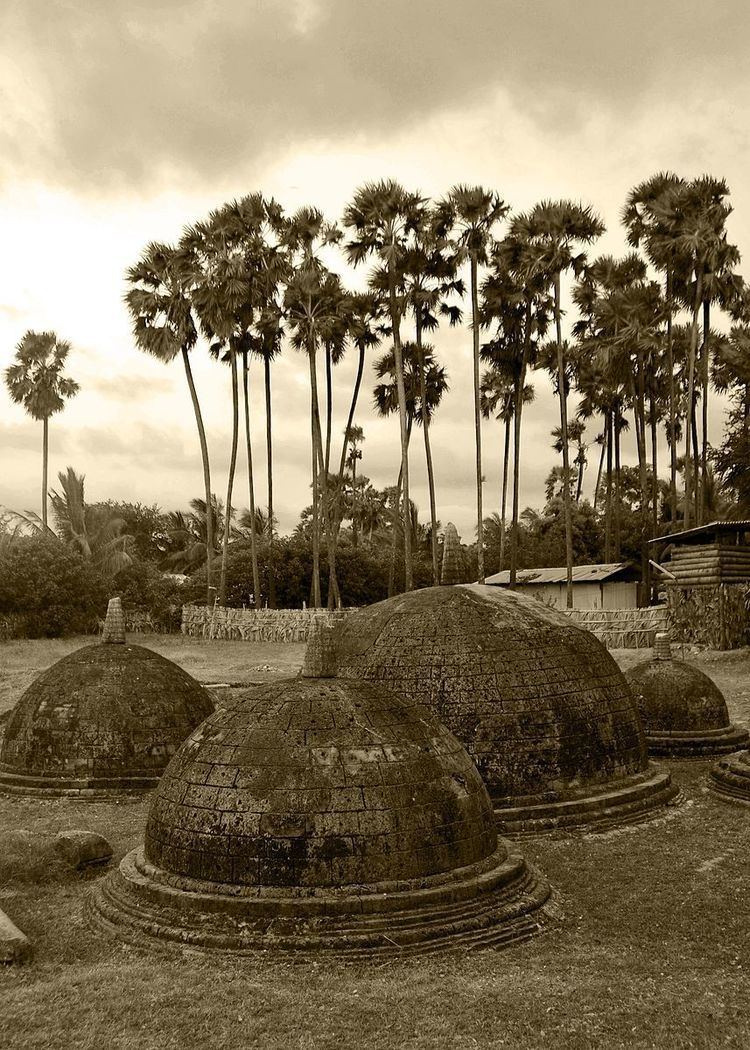Location Chunnakam, Sri Lanka Province Northern Province Architectural type Buddhist temple | Affiliation Buddhism District Jaffna District | |
 | ||
Heritage designation Archaeological protected monument Address Puttur-Kantarodai Rd, Sri Lanka Similar Nagadeepa Purana Viharaya, Jaffna Fort, Casuarina Beach, Naguleswaram temple, Jaffna Clock Tower | ||
Kadurugoda Viharaya (Sinhalese: කදුරුගොඩ විහාරය) is an ancient Buddhist temple situated in Chunnakam, Jaffna District, Sri Lanka. The temple is located in a small hamlet called Kandarodai and it is one of the few Buddhist temples remaining in Jaffna today. Currently this temple has been declared as an archaeological site in Jaffna District and is maintained by the Sri Lankan army.
Contents
Name
According to the Vihara Asna (Nam Potha), a Kandyan period compiled book about important Buddhist centers in Sri Lanka, the Kadurugoda (Kantarodai) area in Chunnakam has been identified as the today Kadurugoda Viharaya. Currently local people use the name of Kandarodai to describe this area, but that is a broken form of the Sinhalese word "Kandavurugoda" (a site of a military encampment). With time, the term "Kandavurugoda" became "Kadurugoda", and it was Tamilised into "Kantarodai".
History
The history of Kadurugoda Vihara goes back to the Anuradhapura era. During the time period of King Devanpiya Thissa, their Sangamitta arrived to Dambakolapatuna in Sri Lanka with a sapling of Sri Maha Bodhi. It is said that the road to Anuradhapura from Dambakolapatuna was through this Kadurugoda Vihara area and before going to Anuradhapura she has visited this temple.
According to interlinear inscriptions read by Professor Senarath Paranavithana, it was suggested that this Kadurugoda Vihara was built by a prince of the Shailendra dynasty of the Sri Vijaya Kingdom.
Folklores
There are few folklores which reveal some stories related to this Kadurugoda Vihara. According to one legend, in the 16th century, Jaffna Peninsula was ruled by a king named Sangili. At that time there were 60 Arhat Bhikkus practicing meditation. Due to harassmentfrom King Sangili, those 60 Bhikkus decided to leave Jaffna and go to India. On their way, they had stayed at the Kadurugoda area to accept alms-giving from local residents. A mushroom curry served to them was poisoned and all of the Bhikkus had died. It is believed that these stupas were constructed with enshrining the relics of those 60 Arhath Bhikkus.
Another story says that the 60 Arhath Bhikkus had died due to a famine, which was there for a long time.
Excavations
This site was discovered in 1917 by then Jaffna District Magistrate Paul E. Pieris where he reported about 56 stupas in the area. However, at present only about 20 stupas can be seen.
Through the excavations on that period, the ruins of a shrine room, coloured tiles, parts of Buddha and Bodhisattva statues, Buddha foot imprints and ancient coins belonging to 1st Parakumba, Malla, Leelawathi and Buwenakabahu’s time were found in the site. Some of them were preserved at the Jaffna museum.
Features
Today there are about 20 stupas and a number of stupa foundations can be seen in the Vihara premises. The smallest stupa is about 8 feet in diameter and the largest is about 23.5 feet. The stupas possess unique features that cannot be found anywhere else in Sri Lanka. They have been made of gray colored coral stone and have a very distinguished pattern with small holes all over them. Another special feature of these ancient stupas is that they does not possess the standard square shape parts (Hathares Kotuwa and Dewatha Kotuwa) above the dome and instead they have umbrella shaped fixed pinnacles.
Present
In 1948 the archaeology department purchased seven acres around this area to preserve this site. But due to land occupation by local residents, the area had been reduced to about three acres in 1965. Currently the land has been reduced into less than one acre.
